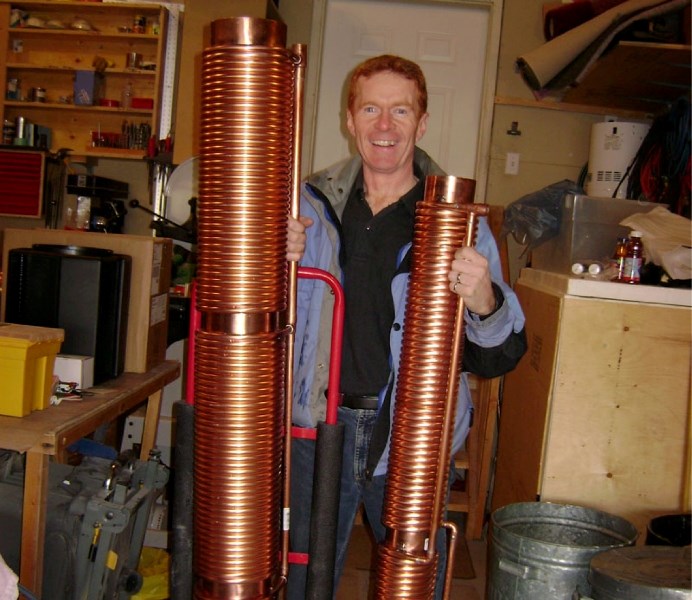Are you pouring your money down the drain when you shower?
For most homes, the answer is yes, says engineer David Morrow.
"When you have a shower, you're actually using about 15,000 watts of heat," he says, almost all of which goes down the drain. Spend $500 on a drain heat recovery unit, and you can shave about 25 per cent off your hot water bill.
It's a cheap, low-maintenance way to green your home that virtually no one thinks about, Morrow says.
"It's like insulation. Once you put it in, you don't have to do anything to it," he said.
Morrow, an engineer with Hydraft Development Services, is giving a free talk Wednesday on how to get the most green energy out of a home.
There are a lot of energy options out there, says Rob Harlan, executive director of the Solar Energy Society of Alberta, and many people get confused about what to do first.
"David is quite the genius in this area," Harlan says, and will be able to explain how to evaluate all the options on the market.
Reduce, reuse, regenerate
A former vice-president of power development for Epcor, Morrow has spent the last eight years advising builders across Alberta about energy efficiency. He was one of the designers of the Riverdale Net Zero home.
Green renovations like insulation and solar panels might sound expensive, he says, but are actually great investments. A solar system with a 22-year payback is effectively a bond that gives you 4.5 per cent interest a year.
"People want a fast payback," he says, but these long-term investments are better than anything else you can get on the market.
Morrow says he advises his clients to follow three simple steps when it comes to green renovations: reduce your energy load, reuse what you can and intelligently make the rest.
Load reduction means improving your building's envelope, he explains.
"If you live in an old, drafty house, we should be talking about weather stripping and caulking," he says, as leaks mean heat loss.
Next comes insulation. Although most people recommend starting with the attic, he says, many attics are already insulated to R40 levels, which is pretty good. (The R-scale runs from 1 to 100, where an R100 wall loses a hundredth of the heat of a R1.)
"It's the first R5 or R10 that does most of the work," he says, so you run into diminishing returns by adding more to an already insulated section. Uninsulated basements and floors may be better spots to invest in in these cases.
After you've invested in efficient appliances, Morrow says, it's time to reuse your wasted energy. One example is a heat-recovery ventilator, which runs a home's outbound hot air past the inbound cold air to warm it. These devices can recover 60 to 90 per cent of your heat.
"One that almost everyone can do is water heat recovery," he says. By wrapping copper tubes around your main drain pipe, these heat recovery units (which run for about $500) can suck back about a quarter of the heat you dump down the drain and save you about $80 a year — they pay for themselves in seven years.
"Energy production is the last step," he emphasizes, as it's always cheaper to conserve and recover energy instead. Here, you have to think about how you'll use the energy. If you want air-conditioning, for example, you may want to go geothermal, as it can heat and cool your home.
The talk starts at 7 p.m. this Nov. 9 in the CN Theatre at Grant MacEwan University. See solaralberta.ca for details.




